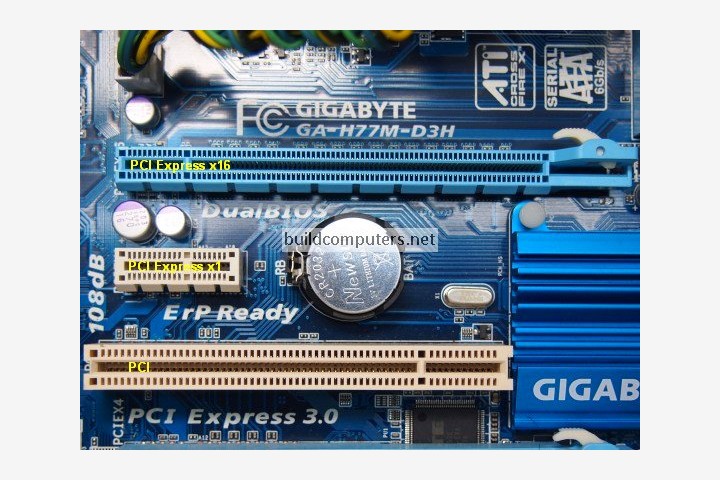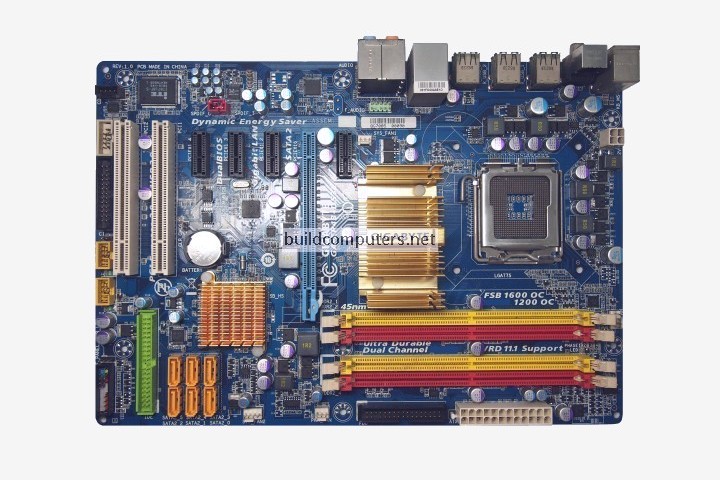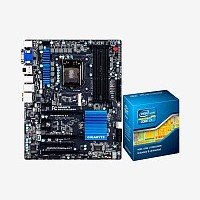Everything You Need to Know About an ATX Motherboard
What is the standard ATX form factor and is an ATX motherboard right for you? Learn the answer here and how to choose the best ATX mainboard.
Introduced by Intel in 1995 to replace the aging 1980s AT form factor, ATX (Advanced Technology eXtended) quickly became the dominant form factor for desktop computers due to a few reasons: smaller size (easier motherboard installation), improved power design, customizable back panel ports and most important of all... lower manufacturing costs.
While the smaller Mini ITX and MicroATX motherboards have been chipping away at ATX's share of the market in recent years, ATX boards still remain as a popular choice among power users such as serious gamers, overclockers, server admins, graphics designers etc.
Now let's meet this ATX form factor that has found such long-lasting success in the PC world:
When Should You Buy an ATX Motherboard?
1. You intend to overclock your CPU, RAM and/or graphics card
There's no
competition here: Dollar for dollar, ATX offers the best overclocking
performance (vs. Micro ATX and Mini ITX).
The extra real estate on an ATX mainboard allows it to have:
- More power phases for cleaner and more stable power
- More clearance around CPU socket to accommodate those huge after-market heat sinks
- Wider gaps
between expansion slots for better graphics cards cooling
All the above factors add up to superior overclocking results. And let's not forget the spacious ATX mid-tower and full-tower cases with enough room for half a dozen case fans, water cooling setups, tall (CPU and RAM) heat sinks and all that other cool stuff.
2. You intend to build a computer for serious gaming
While modern MicroATX motherboards are able to meet the needs of
mainstream gamers, an ATX system is still the way to go if you're
craving for a gaming beast that can run the latest games at maximum
resolution with ultra-high settings (while breezing along at 60+ fps).
It's
the only consumer form factor that supports up to four graphics cards for
an extreme quad graphics card setup. Even if you have just one or two
graphics cards, a well-designed ATX board allows for wider spacings and
better air flow. This is essential given that high-end graphics cards
are easily the hottest components in your entire computer.
Most
mid to high-end MicroATX boards support up to two graphics cards at best.
There are rare mATX models that can sustain three graphics cards, but they
come with massive price tags and the poor graphics cards are going to be
packed like sardines.
3. You want a simple-to-build computer with more useful years
While it's common knowledge that ATX motherboards cater well to power
users, an often-overlooked fact is that they are also easier to work
with... making them an ideal choice for first time builders.
Most
Mini ITX cases (and some MicroATX ones) have strict hardware
restrictions such as SFX power supplies, low-profile expansion cards,
low-rise heat sinks or SODIMM RAM etc. On the other hand, ATX cases are
able to accept a wide range of hardware, giving you more computer parts
to choose from.
The larger number of expansion slots on a ATX
board also makes it more "future-proof", allowing you to take advantage
of new technologies as they emerge. For example, if your current
motherboard lacks USB 3.0 ports, you can just pop in an USB 3.0
expansion card.
How to Choose the Perfect ATX Motherboard
Recommended Motherboard CPU Combos
Budget Computer:
AMD Athlon 3000G CPU
Gigabyte B450M DS3H Motherboard
Mid Range Computer:
AMD Ryzen 5 3400G CPU
Gigabyte B450 Aorus M Motherboard
Gaming Computer:
AMD Ryzen 5 3600 CPU
Asus AM4 TUF Gaming X570-Plus Motherboard
Home Theater PC:
AMD Ryzen 3 3200G CPU
Gigabyte B450 I Aorus Pro Wi-Fi Motherboard
Click here for our buyer's guide to the best motherboard CPU combos.
RAM Slots
Most standard ATX motherboards come with four DIMM slots (though you might
have to make do with two on some budget models). Four slots will be adequate
except for the most demanding of users - See our "How Much RAM Do You Need" article for more info.
In
case you do need that much RAM (e.g. server applications,
virtualization, RAM disk), there are motherboards for Intel Extreme
processors that come with up a mind-boggling eight RAM slots.
Expansion Slots
The number of expansion slots on an ATX board varies from a minimum of four to a maximum of seven. Even four slots
are plentiful for most people since an average user is just going to
fill up one to two slots.
Most modern motherboards offer three types of expansion slots: PCI Express x16, PCI Express x1 and the aging PCI (see image below):

Not
all PCI Express x16 slots are built equal. They can have different
number of lanes: 4, 8 or 16. If you're installing a (mid to high end)
graphics card, the slot needs to have at least eight lanes so that it
doesn't hold back your card's full potential. To check for the number of
lanes, refer to the motherboard's specifications page.
Our
general recommendation for an ATX board is to choose one with at least two
PCI Express x16 slots and two PCI Express x1 slots. The remaining slots
will depend on your usage. For example if you have an older PCI card,
then you'll want to have at least one PCI slot as well.
SATA Connectors
Every internal hard drive and optical drive requires its own SATA connector. Most ATX motherboards have six or more connectors (four minimum), which is enough for most users. What's more important is to make sure that you have at least one SATA 3 connector (vs. the slower SATA 2) if you intend to install a SATA 3 solid state drive.
Power Phases
All things being equal, a motherboard with more power phases = cleaner
and more stable power to your CPU and RAM. This is especially important
for overclocking since you'll be tinkering with voltages.
One of
the reasons why most overclockers prefer ATX motherboards is the extra
real estate for accommodating more power phases. For serious
overclocking, you should buy an ATX board with at least 8 + 2 phases (8
for the CPU, 2 for the RAM). For the rest of us who don't overclock, 4 +
2 phases works well enough.
A high quality motherboard VRM
(Voltage Regulator Module) is essential for its longevity, especially if
you intend to overclock. Well-built motherboards often have (Japanese)
solid capacitors and ferrite chokes. Motherboard brands with good VRMs:
Asus, Gigabyte, ASRock and MSI.
Others
With USB 3.0 gaining widespread use and boasting impressive
real-world speed gains over USB 2.0 (two to four times faster in most cases),
it is fast becoming a necessity rather than an optional feature.
That's why we recommend buying an ATX motherboard with at least one USB 3.0 port
for connecting to external storage devices (e.g. USB 3.0 flash drives,
hard disk drives and even solid state drives).
SEE ALSO: Recommended Motherboard CPU Combos
MOTHERBOARD GUIDE
- What is a Motherboard and How It Works
- Recommended Motherboard CPU Combos
- Motherboard Components and Parts
- Motherboard Form Factors
- How to Choose a Mini ITX Motherboard
- How to Choose a Micro ATX Motherboard
- How to Choose an ATX Motherboard
- Intel Motherboard Socket Types
- AMD Motherboard Socket Types
- The Difference Between USB 2.0 and 3.0
- How to Install a Motherboard


